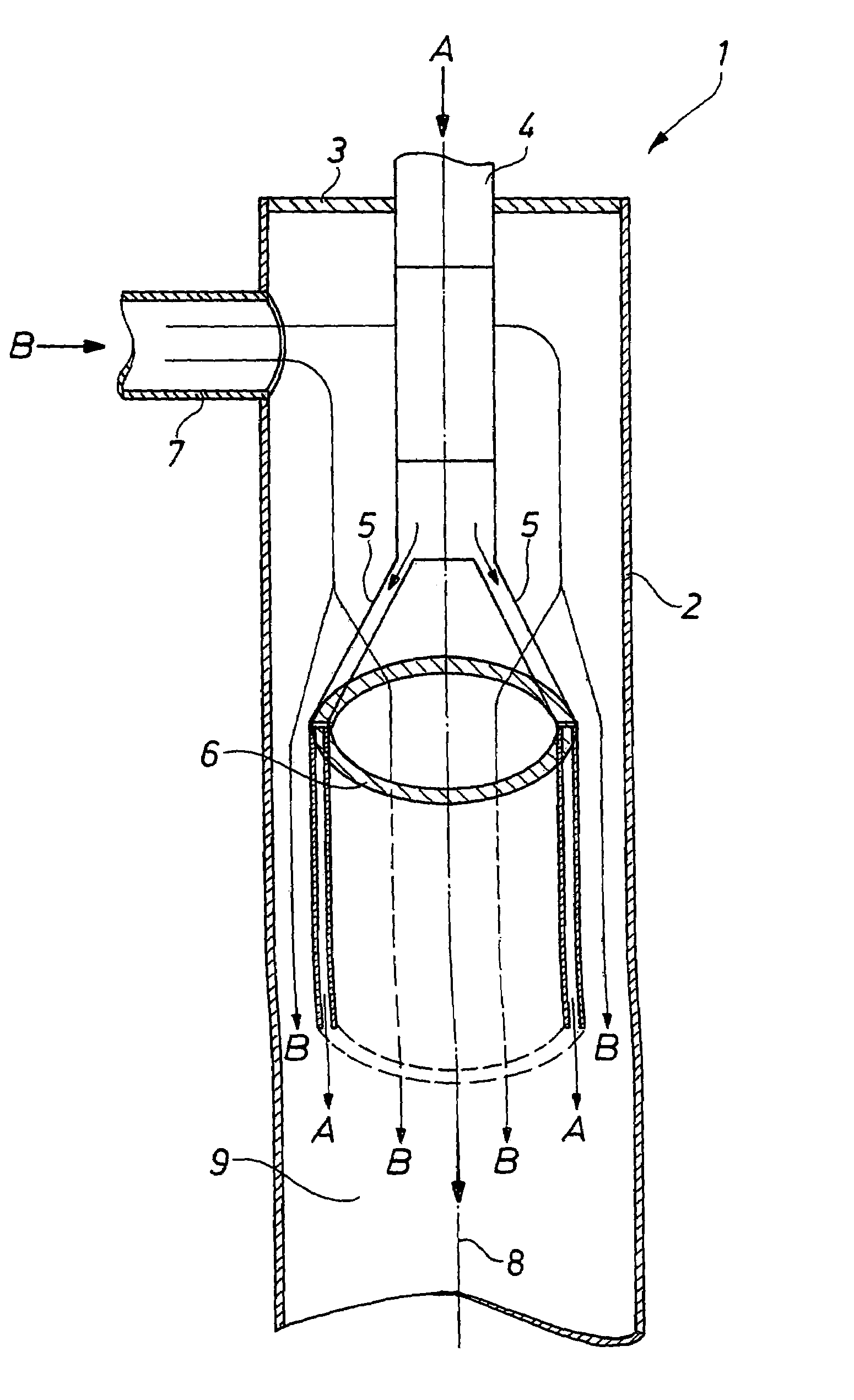Process for the preparation of diisocyanates
a technology of diisocyanates and triisocyanates, which is applied in the preparation of isocyanic acid derivatives, gas-gas reaction processes, organic chemistry, etc., can solve the problems of reducing the mixing rate of the central jet, and affecting the stability of the reaction process
- Summary
- Abstract
- Description
- Claims
- Application Information
AI Technical Summary
Benefits of technology
Problems solved by technology
Method used
Image
Examples
example 1
Example According to the Invention
[0043]An isophoronediamine / inert gas mixture, as starting material stream A, and phosgene as starting material stream B are passed continuously into a tubular reactor according to FIG. 1, comprising a downstream isocyanate condensation stage and isocyanate working-up downstream thereof. The temperatures of the two starting material streams are 300° C. The pressure in the tubular reactor is slightly above atmospheric pressure at 1400 mbar.
[0044]The velocity of the component A in the double-walled guide tube 6 is about 60 m / s and that of component B prior to mixing is about 7 m / s. The ratio of the cross-sectional area of the tubular reactor 1, which area is bounded by the inner wall of the double-walled guide tube 6, to the cross-sectional area of the tubular reactor, which area is bounded by the cylindrical wall 2 of the tubular reactor and the outer wall of the double-walled guide tube, is 1:1.
[0045]The velocity of the reaction mixture at the reacto...
example 2
Comparative Example
[0047]Example 1 is repeated under the same conditions, a smooth jet nozzle being used instead of the double-walled guide tube. The cross-sectional flow areas for the isophoronediamine / inert gas mixture and phosgene at the exit from the nozzle are equal to the cross-sectional flow areas in the tubular reactor according to example 1.
[0048]It is found that, with the use of the conventional smooth jet nozzle at comparable velocities of the components at the mixing point, the maximum temperature in the tubular reactor is reached only substantially later, namely only about five diameters of the cylindrical wall 2 away from the mixing point in the downstream direction. The yield of IPDI, based on the IPDA used, is 98.5% of theory.
[0049]In addition, it is found that the formation of polymeric byproducts which are deposited on the wall of the tubular reactor is reduced by the better and faster mixing with the use, according to the invention, of the tubular reactor having a...
PUM
| Property | Measurement | Unit |
|---|---|---|
| temperatures | aaaaa | aaaaa |
| mean flow velocity | aaaaa | aaaaa |
| mean flow velocity | aaaaa | aaaaa |
Abstract
Description
Claims
Application Information
 Login to View More
Login to View More - R&D
- Intellectual Property
- Life Sciences
- Materials
- Tech Scout
- Unparalleled Data Quality
- Higher Quality Content
- 60% Fewer Hallucinations
Browse by: Latest US Patents, China's latest patents, Technical Efficacy Thesaurus, Application Domain, Technology Topic, Popular Technical Reports.
© 2025 PatSnap. All rights reserved.Legal|Privacy policy|Modern Slavery Act Transparency Statement|Sitemap|About US| Contact US: help@patsnap.com


